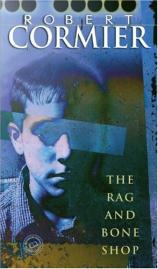Reading Group Guide
Discussion Questions
The Rag and Bone Shop

FOR DISCUSSION
1. The title of this novel is drawn from two lines of a poem by William Butler Yeats, “The Circus Animals’ Desertion.” How does the phrase “the rag and bone shop” (i.e., a place where the worst castoffs end up) sum up the essence of this novel? What is Trent saying about his life when he quotes these two lines? (p. 71) And when he shifts into the final phase of the interrogation and remembers the first line? (p. 123)
2. After Jason vanquishes the bully Bobo Kelton with one blow, “he didn’t think he’d ever hit anybody again but he had proved himself capable of doing it.” (p. 26) How does the second part of that sentence become a weapon later for Trent? Why does hitting Bobo mean an end to Jason’s tears? Is the principal right when he says violence never solves anything?
3. Trent’s deceased wife Lottie had told him, “You are what you do.” Why, coming from her, is this an accusation? How, coming from Trent himself at the end, is it a death sentence? Is it true that people are what they do, not only in their jobs, but in the sum total of all their acts, good and bad? Can this be changed?
4. Sarah Downes (and also Carl Seaton) compares Trent to a priest. How are Trent’s interrogations like what a priest does in the confessional? But what crucial differences in Trent’s intentions and capabilities make the outcome for his “perps” entirely different?
5. The exact definitions of the following words are important to understanding the ideas that underlie Cormier’s themes of guilt, innocence, and forgiveness. Look up admission, confession, absolution, indictment, and remission and notice how their definitions overlap and where they differ. How are these terms central to this story?
6. What are the heavy external and internal pressures on Trent to get a confession from Jason? In real life, is it possible that this kind of pressure may result in hasty convictions of innocent people? Have you heard of any such cases? What might be done to keep this from happening?
7. Trent says he has “rules and regulations” for interrogations. What are some of these strategies that relate to the preliminary scenario, the physical set-up of the room, and the subtleties of psychological intimidation? How do these interrogation techniques affect the suspect?
8. “Thrust and parry” is a phrase Trent uses to describe the interrogation. From what sport does this expression come, and what image does it evoke? As the questioning proceeds, Trent suddenly knows irrevocably that Jason is innocent. How does he talk himself out of acting on this realization? What would have been the consequences if he had allowed himself to follow his conscience?
9. A stunning plot twist takes us by surprise when Trent emerges into the hall after he has tricked Jason into “confessing” and is told by Sarah Downes that Brad Bartlett has just admitted to killing his sister. Suddenly everything is different. What are the present and future implications of this new situation for Trent? For Jason? What emotions might they each have felt at this moment that they didn’t feel?
10. In the end, Jason’s view of reality has been badly twisted by Trent’s perverse questioning and his own false confession. What does he tell himself to justify his plan to kill Bobo? How will this action restore his self-respect? If he carries through on this murder, who will then need to confess?
Discussion questions prepared by Patty Campbell, author of PRESENTING ROBERT CORMIER (Twayne, Dell) and 1989 winner of the ALA’s Grolier Foundation Award for distinguished service to young adults and libraries.
The Rag and Bone Shop
- Publication Date: May 13, 2003
- Mass Market Paperback: 176 pages
- Publisher: Laurel Leaf
- ISBN-10: 0440229715
- ISBN-13: 9780440229711







